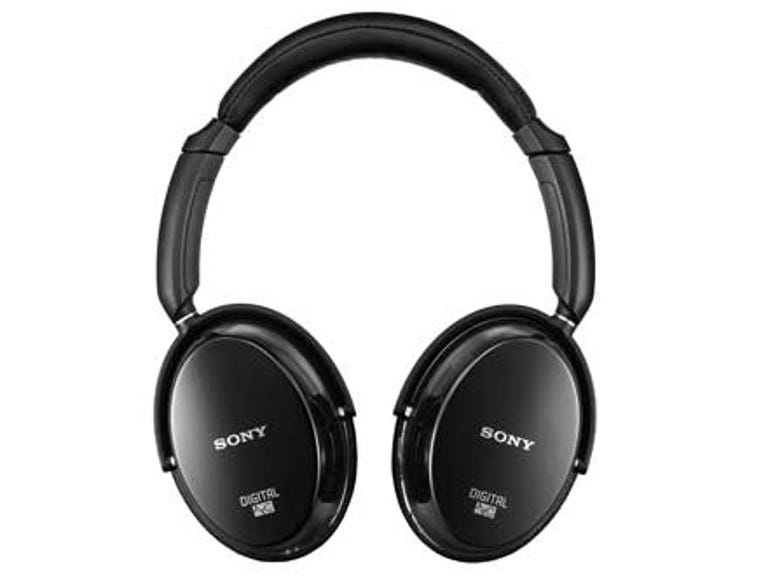 Why You Can Trust CNET
Why You Can Trust CNET Sony MDR-NC500D Digital Noise Cancelling Headphones review: Sony MDR-NC500D Digital Noise Cancelling Headphones
The Sony MDR-NC500D Digital Noise Cancelling Headphones may lighten the wallet, but they are a great option for frequent fliers and tetchy commuters who need superior noise cancellation.
Sony is certainly no stranger to the headphone market. The company's portable line may very well be the most popular after-market earphones. It has quite an array of full-size "cans" as well as a decent selection of noise-cancelling models. The latest high-end set to hit virtual retail shelves combines the two. The MDR-NC500D Digital Noise Cancelling Headphones offer solid sound, high-quality construction, plentiful features, and a luxury price tag (AU$699) to match. These 'phones aren't without their flaws, but they're still a great option for frequent fliers who have cash to spare and a distaste for low-end rumble.
The Good
The Bad
The Bottom Line
On first glance, the Sony MDR-NC500D's design offers nothing to complain about. They're clearly well made, with an adjustable band made out of thick plastic that's padded at the top for extra comfort. It can take quite a bit of outward stress without worry that it'll break, which is a good sign. As is typical with Sony products, the style is quite understated. The ear cups, which fold flat for storage, are ensconced in a strong, lightweight magnesium alloy that's just 0.6mm thin and trimmed with a chrome ring. The cups are oblong to conform to the shape of the standard ear. However, the surrounding padding is narrow and not very cushy. That, combined with the oval shape and overall tight fit of the headphones, caused some discomfort as the ear cups pressed against the pressure points at the back of the jaw. To be fair, though, other users tried them with varied results, so it may not be an issue for everyone.

Sony includes an excellent hard-shell carrying case. The right half has various straps for organising the many cables, as well as moulded fittings for the ear cups. The left half has a small pouch for storing AA batteries and the aeroplane adapter. (Credit: Sony)
The Sony MDR-NC500D headphones are not lacking for features. Examining the right ear cup reveals several of them. Here, there's an audio input analysis key (more on this shortly), a monitor button for muting playback, and a switch for turning the headphones on, which automatically activates the noise-cancellation function, as well. These cans cannot be used without this function, which is a bit of a bummer if your battery runs out. On the plus side, the headphones include a built-in rechargeable Lithium-ion battery as well as an extra cord with a battery pack that accepts two AA batteries (also included), or they can run off of AC power using the included power adapter. This and the interchangeable audio-input cables attach to two ports found on the left ear cup. In addition to the battery pack cord noted above, Sony includes two standard audio cables of varying lengths for use with the headphones. There's also a very nice hard-shell case with compartments and straps for all the included accessories, as well as a quarter-inch adapter and a nifty aeroplane adapter with one retractable plug.
Of course, the most compelling feature found on the MDR-NC500D is the noise-cancellation function. First off, it uses what's known as feedback type noise cancelling, meaning the microphone is placed near the ear rather than on the outside of the ear cup (known as "feedforward"). This allows the unit to better analyse what sounds are actually coming straight at the eardrum, whereas the feedforward has to estimate what the sound will be once it reaches the ear. Thus, a feedback type can more accurately adjust to environmental noise, increasing the effectiveness of the noise cancellation. Also, you may have noticed the "digital" designation in the product name. This refers to the fact that the headphones use a digital equaliser combined with a software engine in order to cancel ambient noise and reduce stress on your ears. It also allows the headphones to react in-kind to various environments, such as an aeroplane, a train, or an office, which all generate different types of noise. The aforementioned audio input analysis key allows you to reanalyse your current environment for the most effective noise isolation.
All this technical stuff is great, but it's really for naught if it doesn't work in practice. Fortunately, we found that the MDR-NC500D headphones offered superior noise cancellation during testing in the office and on the bus. We were also not disappointed by the overall sound quality. Our one complaint is that bass sounded mushy at times — it was definitely present and didn't overpower the music, but it wasn't quite as tight as we expected. High-end details were clear and sparkly, with shimmery acoustic guitars and tinkling triangles. Mids were rich and buttery, and we felt enveloped by music on the whole.
